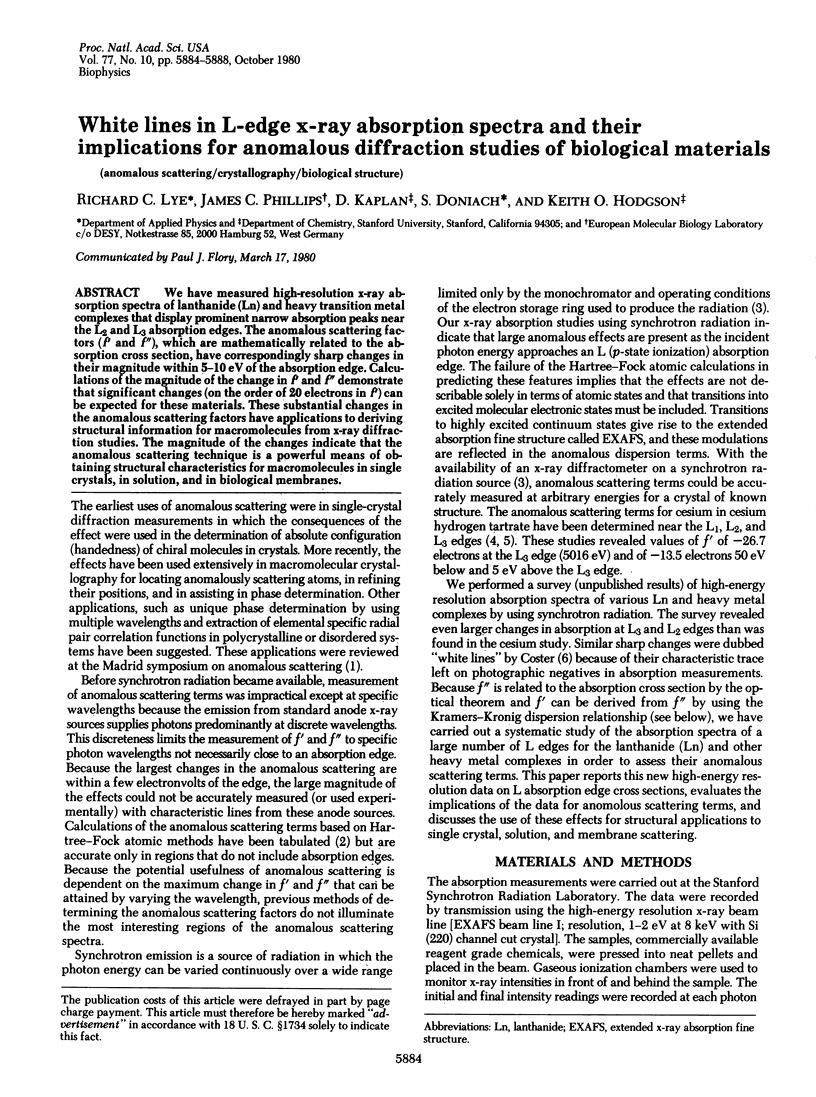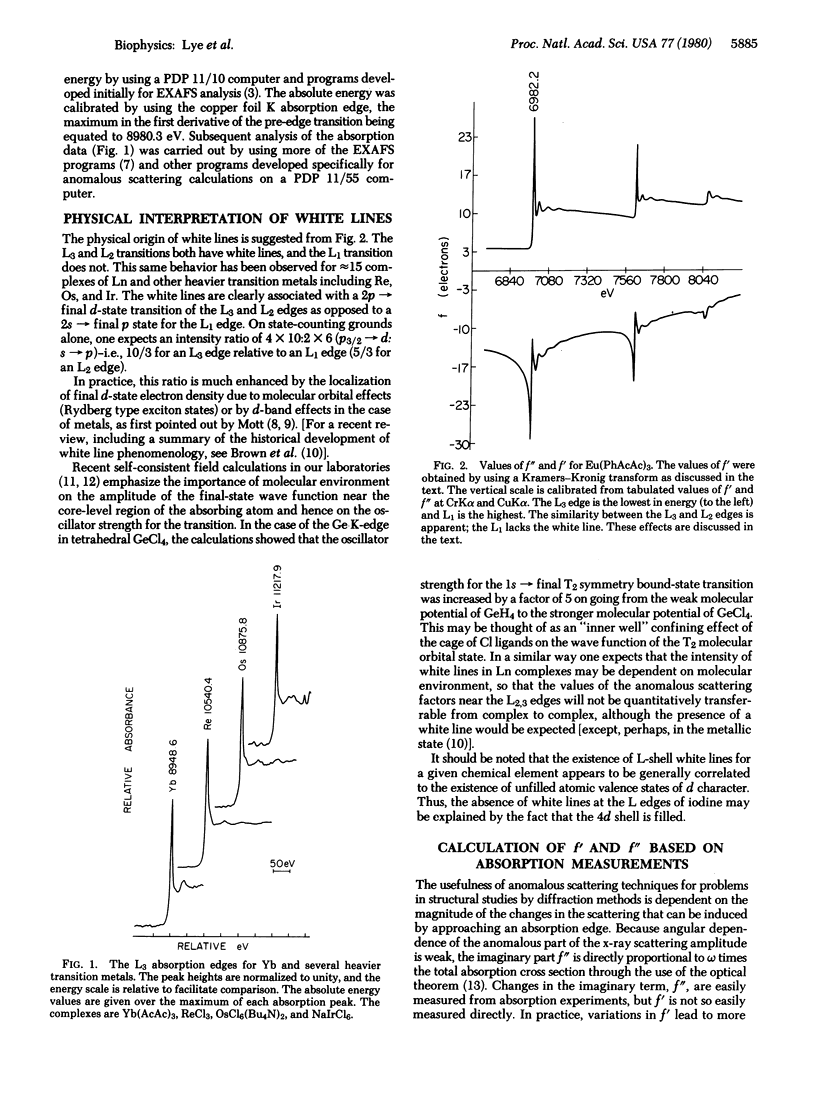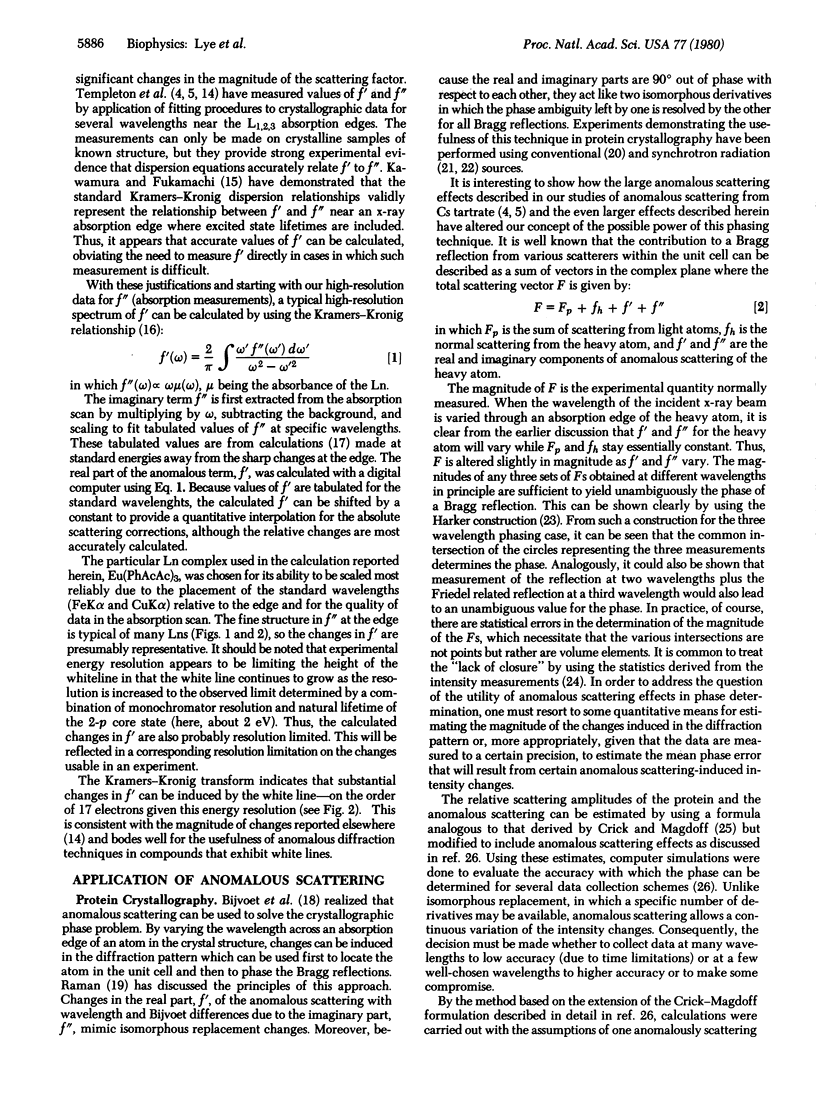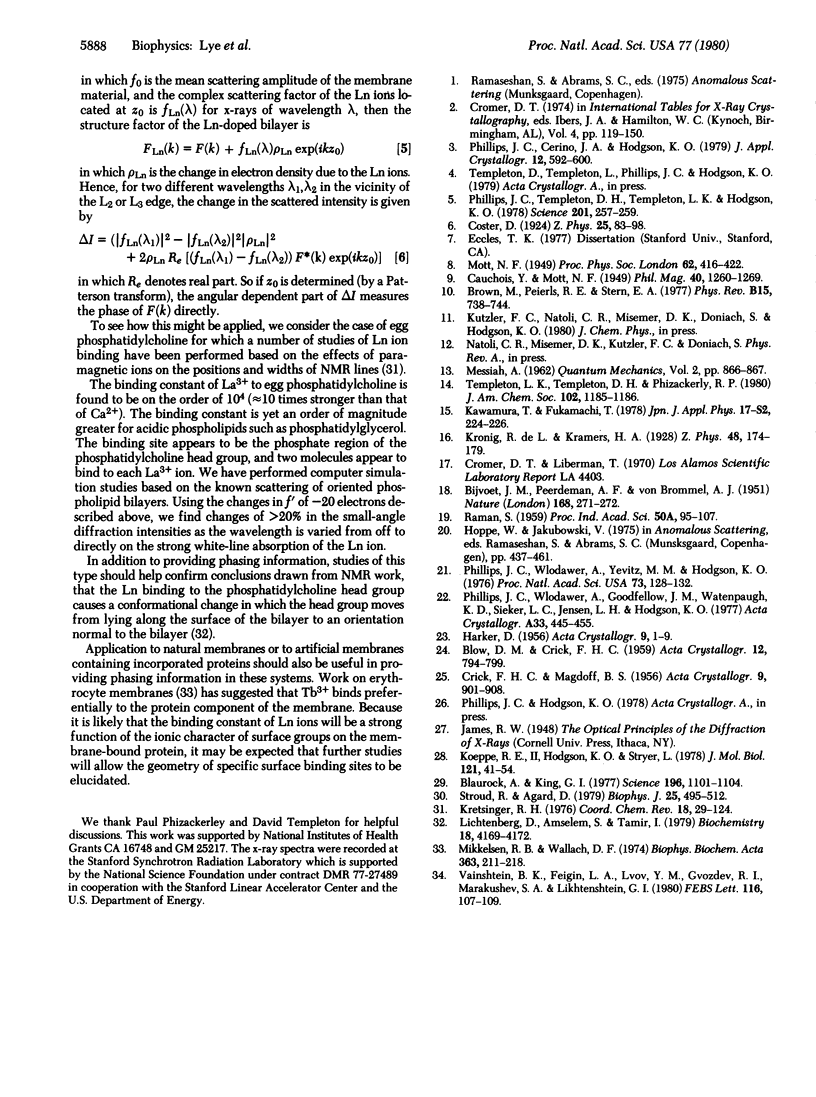Abstract
We have measured high-resolution x-ray absorption spectra of lanthanide (Ln) and heavy transition metal complexes that display prominent narrow absorption peaks near the L2 and L3 absorption edges. The anomalous scattering factors (f' and f"), which are mathematically related to the absorption cross section, have correspondingly sharp changes in their magnitude within 5-10 eV of the absorption edge. Calculations of the magnitude of the change in f' and f" demonstrate that significant changes (on the order of 20 electrons in f') can be expected for these materials. These substantial changes in the anomalous scattering factors have applications to deriving structural information for macromolecules from x-ray diffraction studies. The magnitude of the changes indicate that the anomalous scattering technique is a powerful means of obtaining structural characteristics for macromolecules in single crystals, in solution, and in biological membranes.
Full text
PDF




Selected References
These references are in PubMed. This may not be the complete list of references from this article.
- Blaurock A. E., King G. I. Asymmetric structure of the purple membrane. Science. 1977 Jun 3;196(4294):1101–1104. doi: 10.1126/science.870970. [DOI] [PubMed] [Google Scholar]
- Koeppe R. E., 2nd, Hodgson K. O., Stryer L. Helical channels in crystals of gramicidin A and of a cesium--gramicidin A complex: an x-ray diffraction study. J Mol Biol. 1978 May 5;121(1):41–54. doi: 10.1016/0022-2836(78)90261-9. [DOI] [PubMed] [Google Scholar]
- Lichtenberg D., Amselem S., Tamir I. Dependence of the conformation of the polar head groups of phosphatidylcholine on its packing in bilayers. Nuclear magnetic resonance studies on the effect of the binding of lanthanide ions. Biochemistry. 1979 Sep 18;18(19):4169–4172. doi: 10.1021/bi00586a019. [DOI] [PubMed] [Google Scholar]
- Mikkelsen R. B., Wallach D. F. High affinity calcium binding sites on erythrocyte membrane proteins. Use of lanthanides as fluorescent probes. Biochim Biophys Acta. 1974 Sep 6;363(2):211–218. doi: 10.1016/0005-2736(74)90060-1. [DOI] [PubMed] [Google Scholar]
- Phillips J. C., Templeton D. H., Templeton L. K., Hodgson K. O. LIII-Edge Anomalous X-ray Scattering by Cesium Measured with Synchrotron Radiation. Science. 1978 Jul 21;201(4352):257–259. doi: 10.1126/science.201.4352.257. [DOI] [PubMed] [Google Scholar]
- Phillips J. C., Wlodawer A., Yevitz M. M., Hodgson K. O. Applications of synchrotron radiation to protein crystallography: preliminary results. Proc Natl Acad Sci U S A. 1976 Jan;73(1):128–132. doi: 10.1073/pnas.73.1.128. [DOI] [PMC free article] [PubMed] [Google Scholar]
- Stroud R. M., Agard D. A. Structure determination of asymmetric membrane profiles using an iterative Fourier method. Biophys J. 1979 Mar;25(3):495–512. doi: 10.1016/S0006-3495(79)85319-9. [DOI] [PMC free article] [PubMed] [Google Scholar]
- Vainshtein B. K., Feigin L. A., Lvov Y. M., Gvozdev R. I., Marakushev S. A., Likhtenshtein G. I. Determination of the distance between heavy-atom markers in haemoglobin and histidine decarboxylase in solution by small-angle x-ray scattering. FEBS Lett. 1980 Jul 11;116(1):107–110. doi: 10.1016/0014-5793(80)80539-4. [DOI] [PubMed] [Google Scholar]


